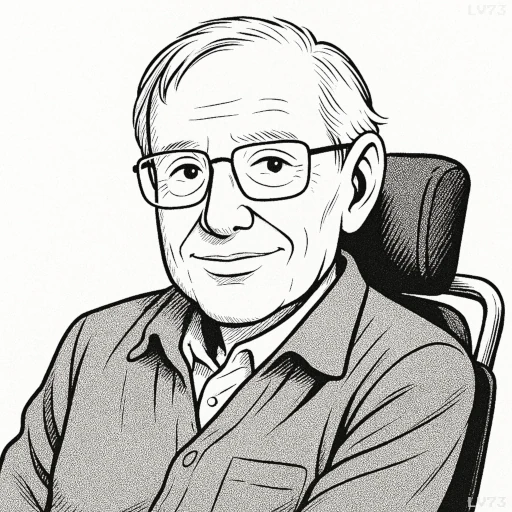“Time can behave like another direction in space under extreme conditions.”

- January 8, 1942 – March 14, 2018
- British
- Theoretical physicist, science writer
table of contents
Quote
“Time can behave like another direction in space under extreme conditions.”
Explanation
In this quote, Stephen Hawking refers to a concept in theoretical physics that arises from his work with general relativity and the geometry of spacetime. According to Einstein’s theory, space and time are not separate entities, but rather, they form a four-dimensional fabric known as spacetime. The idea that “time can behave like another direction in space” comes from the way that time can be treated as a spatial dimension under certain extreme conditions, especially near singularities such as those found at the centers of black holes.
In general relativity, space and time are interconnected and can be distorted by the presence of mass and energy. Under extreme conditions—such as near the event horizon of a black hole or during the early moments of the Big Bang—the traditional separation between space and time becomes blurred. In these cases, time can behave like one of the spatial dimensions, with the distinction between space and time becoming less clear. For instance, as you approach the event horizon of a black hole, time for an external observer appears to slow down, and it is theorized that inside the event horizon, time might even reverse or become spatially oriented, where the “future” could be as inevitable as spatial directions like up or down.
This idea is central to some of Hawking’s research on the nature of black holes and the beginning of the universe. For example, the no boundary condition theory suggests that the universe could have started as a curved, finite object without a singular beginning—in such a scenario, time itself might be curved in a way that it behaves more like a spatial direction in the early universe, with the Big Bang and the arrow of time emerging from a singular point. This theory is part of Hawking’s ongoing work to unify general relativity and quantum mechanics, both of which deal with the nature of space, time, and the universe at its most extreme scales.
This concept challenges our everyday understanding of time as a linear, unidirectional flow from past to present to future. Hawking’s insight points to the possibility that under certain conditions, space and time are not just separate dimensions but are deeply intertwined and interdependent—where the distinction between them can become imperceptible or irrelevant in extreme environments.
Would you like to share your impressions or related stories about this quote in the comments section?
